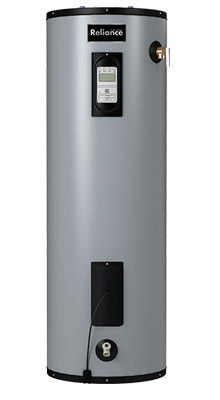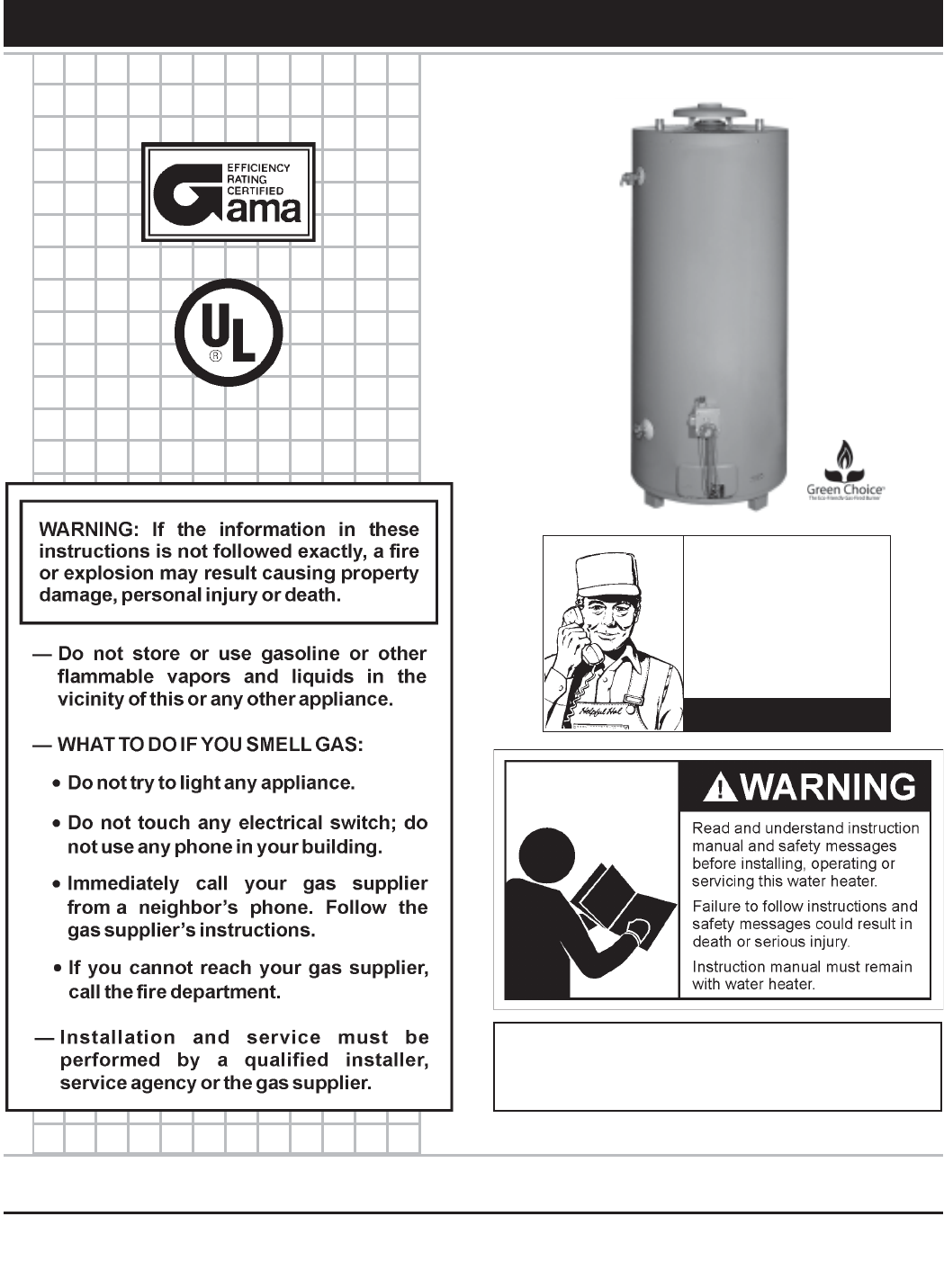Reliance water heaters may encounter issues like no hot water or leaks. Troubleshooting steps include checking the pilot light and thermostat.
Reliance water heaters, a staple in many homes, provide essential hot water for daily activities. Yet, like all appliances, they can experience problems that disrupt this service. Understanding common issues and knowing how to address them can save time and reduce stress.
Troubleshooting your Reliance water heater doesn’t have to be a daunting task. Start with simple solutions such as ensuring the unit is powered and the thermostat is set correctly. Regular maintenance also plays a crucial role in preventing unexpected breakdowns. This guide aims to offer clear, straightforward advice for common problems, ensuring your water heater functions efficiently. Keep these tips in mind to ensure a consistent supply of hot water in your home.
Introduction To Reliance Water Heaters
Reliance Water Heaters offer comfort and efficiency. Many homes and businesses trust these heaters. They provide hot water for various uses. The brand is known for durability and quality. Let’s dive into the world of Reliance Water Heaters.
The Brand’s Market Presence
Reliance stands out in the water heater market. They have a strong presence in North America. Their products cater to diverse needs. Reliance heaters are common in households. They are also found in commercial settings. The brand’s commitment to innovation keeps them ahead.
Common Models In Use
- Electric Series – Ideal for homes, energy-efficient.
- Gas Series – Offers quick heating, cost-effective.
- Tankless Models – Saves space, instant hot water.
Reliance has a model for every need. Users enjoy a range of features. These include temperature control and safety mechanisms. Their models are user-friendly. They also have long warranties. This assures buyers of their investment.
Identifying Common Issues
Troubleshooting a Reliance water heater can seem daunting. Yet, knowing common issues helps. Quick fixes often restore hot water. Let’s dive into common problems and solutions.
No Hot Water
When a Reliance water heater stops producing hot water, check a few key areas:
- Power source: Ensure the unit is plugged in and receiving power.
- Circuit breaker: A tripped breaker needs resetting.
- Thermostat settings: Verify they’re correct for hot water needs.
- Heating elements: Faulty elements require replacement.
Inconsistent Water Temperatures
Inconsistent temperatures signal different issues:
| Issue | Possible Cause | Fix |
|---|---|---|
| Too hot or too cold | Thermostat setting | Adjust the dial |
| Fluctuating temperatures | Malfunctioning thermostat | Replace thermostat |
| Cold water sandwich | Sediment buildup | Flush the tank |
Diagnostic Steps
Having trouble with your Reliance Water Heater? You’re not alone. Many people face issues with their water heaters. The good news is, you can often fix these problems yourself. Follow these diagnostic steps to identify and solve the problem. Let’s start with the basics.
Checking The Power Supply
First, ensure your water heater’s power supply is working. Here’s how:
- Check the circuit breaker. Make sure it hasn’t tripped.
- Look at the power switch. It should be in the ON position.
- Examine the plug. Ensure it’s properly connected to the outlet.
If everything looks good but there’s still no power, you might need professional help.
Examining The Thermostat Settings
Next, let’s look at the thermostat. It controls the water temperature.
- Find the thermostat. It’s usually behind a panel on the heater.
- Check the temperature setting. It should be between 120°F and 140°F.
- If it’s too low, turn it up slightly and wait for the water to heat.
If adjusting the thermostat doesn’t work, the thermostat may be faulty.

Credit: www.youtube.com
Element Failures
Reliance water heaters are reliable. Yet, element failures can happen. Learn to fix these issues fast. Troubleshooting is easy when you know how. Let’s dive into testing and replacing elements.
Testing Heating Elements
Testing elements is the first step. You’ll need a multimeter. Turn off the power first. Safety is key. Follow these steps:
- Access the panel: Remove the heater’s access panel.
- Check the thermostat: Ensure it’s not tripped.
- Test the element: Place the multimeter probes on the element’s screws.
- Read the multimeter: No reading means the element is bad.
Replacing Elements
Bad elements need replacing. Make sure you have the right tools. Follow these steps:
- Drain the tank: This is crucial before starting.
- Remove the old element: Use an element wrench.
- Install the new one: Ensure it’s the correct wattage.
- Refill the tank: Do this before turning the power back on.
Regular maintenance prevents future failures. Keep your water heater in top shape.
Pressure Relief Valve Checks
The Pressure Relief Valve is a critical component of your Reliance Water Heater. It ensures safe operation by releasing pressure buildup. Regular checks can prevent malfunctions and potential hazards.
Signs Of Valve Failure
Identifying valve failure signs early can save you from future troubles. Look out for these indicators:
- Water leaks around the valve area.
- Unexpected noises like hissing or popping from the valve.
- Water temperature fluctuations without reason.
Steps For Valve Replacement
Replacing a faulty valve is straightforward. Follow these steps:
- Turn off power and water supply to the heater.
- Drain the tank below the valve level.
- Remove the old valve with a wrench.
- Apply teflon tape on the new valve’s threads.
- Install the new valve, ensuring a snug fit.
- Refill the tank and restore the power and water.
- Test the valve by lifting the test lever.
Solving Pilot Light Problems
Dealing with a Reliance water heater can sometimes be tricky. One common issue is the pilot light going out. This post will guide you through solving pilot light problems. We will focus on troubleshooting the ignition process and offer maintenance tips. Keep your Reliance water heater running smoothly with these steps.
Troubleshooting The Ignition Process
Is your pilot light not staying lit? Follow these steps to fix it:
- Check the gas supply. Make sure your gas valve is open.
- Inspect the thermocouple. It should be tight and clean.
- Look at the pilot orifice. Clean it if it’s blocked.
- Examine the vent. A blocked vent can stop the pilot light.
After checking these, try lighting the pilot again. If it doesn’t work, you might need a new thermocouple.
Maintenance Tips For The Pilot Light
Keep your pilot light happy with these maintenance tips:
- Regularly clean the pilot orifice. This prevents blockages.
- Check the thermocouple. Tighten it and keep it clean.
- Keep the area around the water heater clean. This ensures good airflow.
- Inspect the gas valve. Make sure it’s fully open for gas flow.
By following these tips, your pilot light should work well. Remember, safety first! Always turn off the gas when working on your heater.
Addressing Noise Issues
Is your Reliance water heater making strange sounds? Don’t worry. You can often fix these noises with a few steps.
Identifying Types Of Noises
Different sounds can mean various issues. It’s important to identify them correctly. Here’s a quick guide:
- Popping or rumbling: This often indicates sediment build-up.
- High-pitched whining: This can suggest scale deposits on electric heating elements.
- Sizzling or hissing: This noise might occur when condensation drips onto the burner.
Mitigating Sediment Build-up
Sediment can cause noise and reduce efficiency. Follow these steps to fix it:
- Turn off power: Always shut off power to the heater for safety.
- Connect hose: Attach a garden hose to the drain valve.
- Drain tank: Let the water and sediment flow out.
- Flush: Turn on the water supply to flush any remaining sediment.
- Refill: Remove the hose, close the valve, and refill the tank.
- Restore power: Turn the power back on once the tank is full.
Regular maintenance keeps your heater quiet and efficient.

Credit: www.reliancewaterheaters.com
Preventive Maintenance And Care
Maintaining a Reliance water heater is key to its performance. Regular care prevents issues. It extends the unit’s lifespan. Let’s explore essential maintenance steps.
Routine Inspection Checklist
Periodic checks keep water heaters in top shape. Follow this checklist:
- Check for leaks or signs of wear.
- Inspect the pressure relief valve.
- Look at the thermostat settings.
- Flush the tank annually to remove sediment.
- Test the heating elements.
- Ensure proper clearance around the heater.
Longevity Tips For Your Water Heater
Want your water heater to last longer? Keep these tips in mind:
| Tip | Action |
|---|---|
| Temperature | Set it to 120°F to prevent overheating. |
| Insulation | Add an insulation blanket to save energy. |
| Anode Rod | Replace it every 3-5 years to combat corrosion. |
| Space | Keep the area around your heater clear. |
By following these tips, your Reliance water heater will run efficiently. It will provide consistent hot water for years.
Professional Assistance Vs. Diy
Deciding between professional assistance and DIY for water heater issues can be tough. Understanding when to call a technician and the resources for DIY troubleshooting is key. This guide will help you make an informed decision.
When To Call A Technician
Water heater problems can range from simple to complex. Here are signs you need a professional:
- No hot water: Could indicate a major component failure.
- Leaks: These often require specialized knowledge and tools.
- Strange noises: Popping or banging could mean sediment buildup.
- Error codes: Modern heaters display codes that professionals can decipher.
- Gas issues: A licensed technician should handle these for safety.
Resources For Diy Troubleshooting
For minor issues, these resources can guide your DIY repairs:
| Resource | Description |
|---|---|
| User Manual | Offers basic troubleshooting steps and maintenance tips. |
| Online Forums | Connect with others who have faced similar problems. |
| Video Tutorials | Visual guides on fixing common water heater issues. |
| Manufacturer’s Website | Provides FAQs, parts, and contact information for support. |

Credit: homeappliance.manualsonline.com
Frequently Asked Questions
Why Is My Reliance Water Heater Not Heating?
A faulty heating element or thermostat could be the issue. Check for power continuity and reset if necessary.
How To Reset A Reliance Water Heater?
Locate the red reset button on the thermostat and press it firmly. If it trips again, call a professional.
What Causes A Reliance Water Heater Leak?
Leaks can originate from loose connections, tank corrosion, or a faulty temperature and pressure relief valve.
Can I Fix A Reliance Water Heater Myself?
Minor issues like a tripped breaker or thermostat reset can be DIY. For complex problems, seek professional help.
How Long Do Reliance Water Heaters Last?
Reliance water heaters typically have a lifespan of 8-12 years, depending on maintenance and water quality.
What Maintenance Does A Reliance Water Heater Need?
Annual flushing, checking the anode rod, and testing the T&P valve are essential for optimal performance.
Conclusion
Tackling common issues with your Reliance water heater doesn’t have to be daunting. With the right guidance and a bit of patience, many problems can be resolved. Remember, regular maintenance keeps your unit running efficiently. For complex issues, always consult a professional.
Stay warm, and trust in your ability to troubleshoot effectively!




